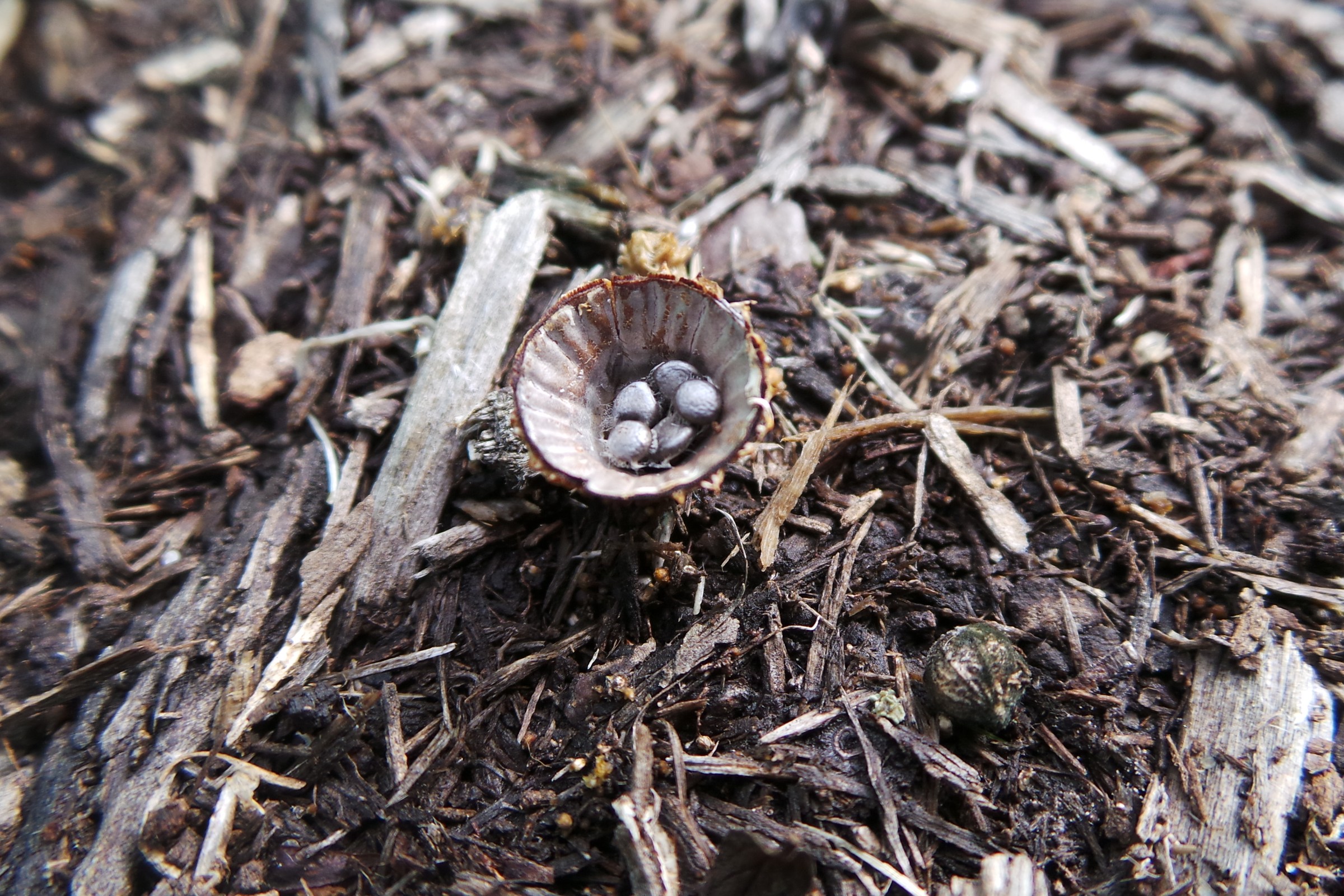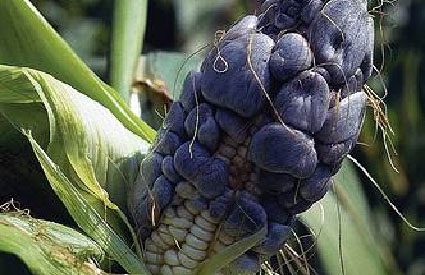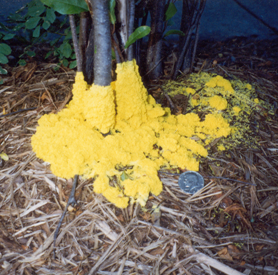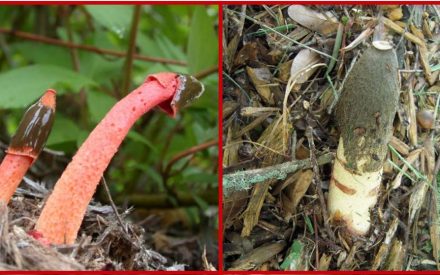
What are bird’s nest fungi?
Bird’s nest fungi are a group of organisms named for their resemblance to miniature bird’s nests. These fungi are found all over the world, growing and reproducing on decomposing organic matter. In temperate regions, bird’s nest fungi can be found virtually anytime there are damp, shady conditions, but they are most commonly seen in the autumn.
What do bird’s nest fungi look like?
Bird’s nest fungi can be identified by the appearance of a brown, gray, or white outer “nest”, with brown or white “eggs” inside. The “eggs” are actually spore-containing structures called peridioles that rest inside the cup-shaped fruiting body (reproductive structure). Individual fruiting bodies are usually only ¼ to ½ inch in diameter and vary in shape, size, and color depending upon species.
Where do bird’s nest fungi come from?
Bird’s nest fungi are classified in the fungal group gasteromycetes. Cyathus spp., Nidula spp., Crucibulum spp., Nidularia spp., and Mycocalia spp. are the most common genera of bird’s nest fungi. These fungi are often found in moist, shaded areas, and typically survive on soil, plant remains, decaying wood, or horse and cow excrement. The characteristic “cup and egg” structure of the bird’s nest fungi provides a unique method of dispersing spores. In a storm, the “eggs” are splashed out of the “cups” by raindrops. “Eggs” can travel a three feet or more before sticking to another object. When the “egg” dries, it splits open releasing fungal spores.
What do I do with bird’s nest fungi in my yard?
Bird’s nest fungi are not harmful to living plants, and control of these fungi is typically not necessary. In fact, bird’s nest fungi can be fascinating organisms to observe when you find them in your yard. On occasion, bird’s nest fungi can be a nuisance, particularly when the “eggs” stick to objects such as houses or cars where they are difficult to remove. If bird’s nest fungi become a nuisance, the number of fruiting bodies can be reduced by decreasing irrigation and raking the affected area. The use of non-mulch groundcovers, such as ivy, can also reduce the occurrence of these fungi. Fungicides are not recommended for treatment of bird’s nest fungi.
For more information on bird’s nest fungi:
Contact the University of Wisconsin Plant Disease Diagnostics Clinic (PDDC) at (608) 262-2863 or pddc@wisc.edu.
Authors: Amy Gibbs and Brian Hudelson, UW-Madison Plant Pathology
Last Revised: 02/28/2024
D-number: D0016
References to pesticide products in this publication are for your convenience and are not an endorsement or criticism of one product over similar products. You are responsible for using pesticides according to the manufacturer’s current label directions. Follow directions exactly to protect the environment and people from pesticide exposure. Failure to do so violates the law.
Thanks to Kristin Kleeberger, Mike Maddox, and Ann Wied for reviewing this document.
A complete inventory of UW Plant Disease Facts is available at the University of Wisconsin-Madison Plant Disease Diagnostics Clinic website: https://pddc.wisc.edu.
Send a Plant Sample for Analysis
Be cautious when self-diagnosing plant health issues. Very few diseases can accurately be diagnosed by eye.
Contact the UW Plant Disease Diagnostics Clinic (PDDC), and for a small fee, clinic staff can examine a plant, determine the cause of the disease/disorder, and provide advice on how to control or prevent the issue.
Download Article






 Huitlacoche
Huitlacoche Slime Molds
Slime Molds Dead Man's Fingers
Dead Man's Fingers Stinkhorns
Stinkhorns


